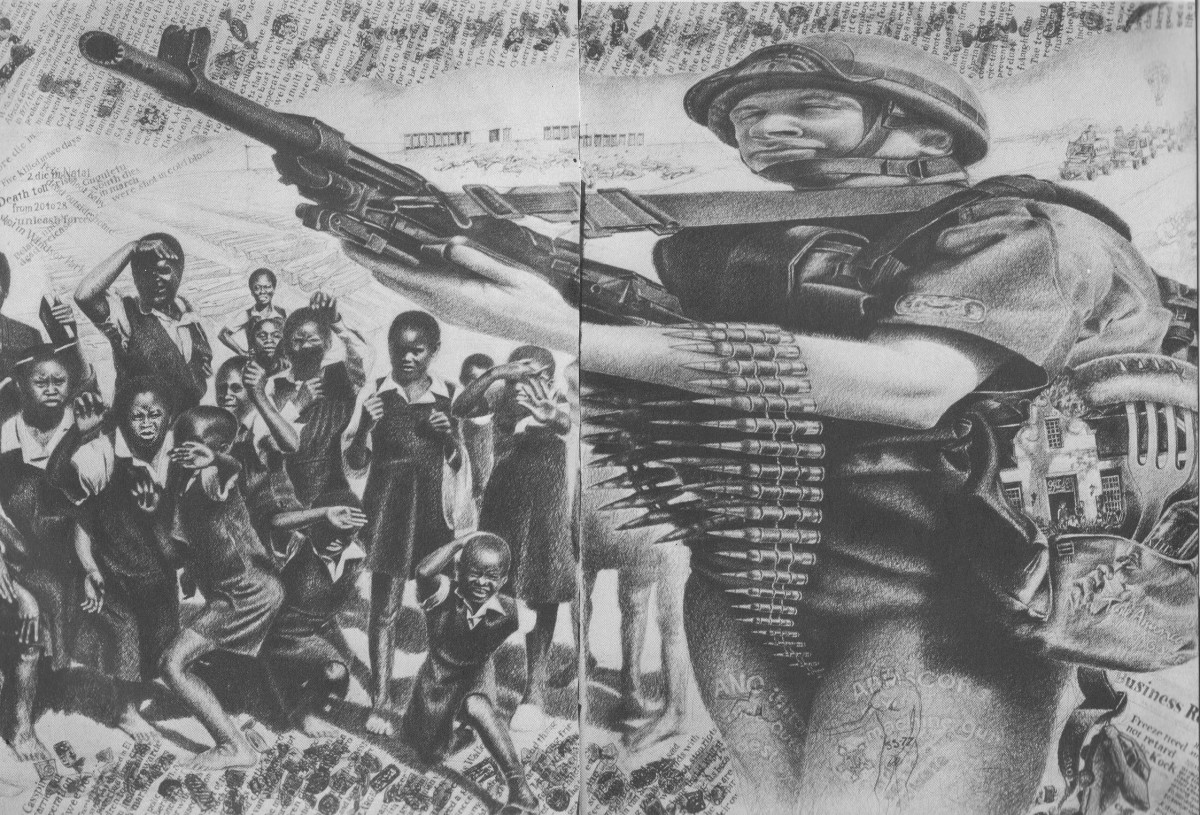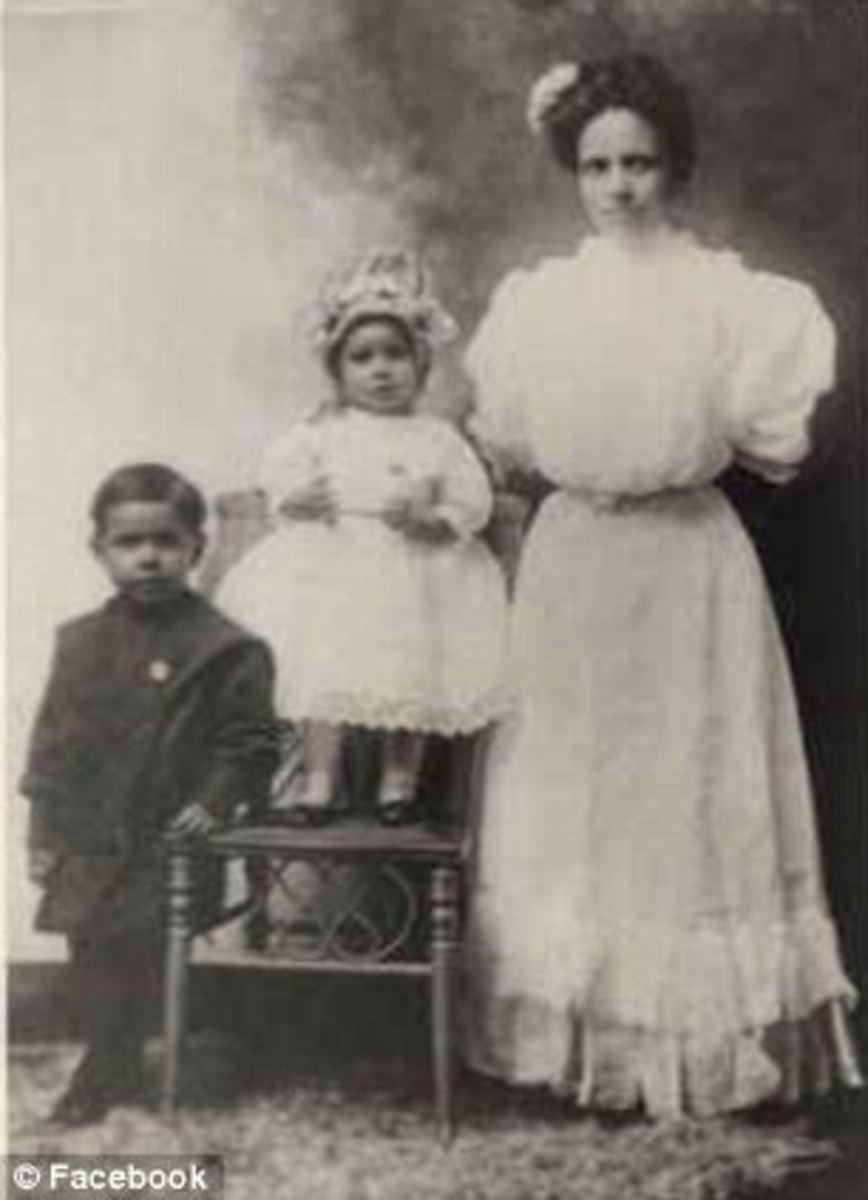Sex and racism - the unsavoury link
The link
"Oh, so you want to fuck kaffir girls!"
This used to be the sort of reaction I would get when I voiced my opinion that blacks in South Africa were getting, to say the least, the short end of the stick in South African society, and that they deserved better, they deserved, indeed, equal rights with whites.
The word "kaffir" is highly pejorative and insulting in the South African context, a word hated by the people to whom it refers, namely Blacks, who regard the use of it as de facto hate speech, which indeed it is.
Somehow this statement for me epitomises the way racism seems to go together with a nasty, infantile view of sex.

The Immorality Act
This view of sex in the light of racism lay behind the infamous "Immorality Act" which caused so much misery in South Africa in the many years in which it was in force. The Act was first promulgated in 1927 in a form which made extra-marital sexual intercourse between people of different races illegal. Then Act was amended in 1950 to include all inter-racial sexual acts. Under this iniquitous Act people's lives were turned into nightmares as police spied on couples through curtains, went into houses to smell the bed sheets and shone torches into car windows, all in search of evidence with which to convict people suspected of having sex across the colour line.
In 1971 this Act wrought havoc among the conservative Afrikaner community in the little Free State town of Excelsior, when 19 of the town's leading citizens were found to have contravened the Act. The fact was that sex across the colour line was very attractive to racists. The Act was in some way an admission of that fact, that racism and sex go together, whether through fear of the other, or the attraction of the exotic.
The result was that anyone who spoke out in favour of rights for Blacks was immediately suspected of wanting to have sex with Black women.
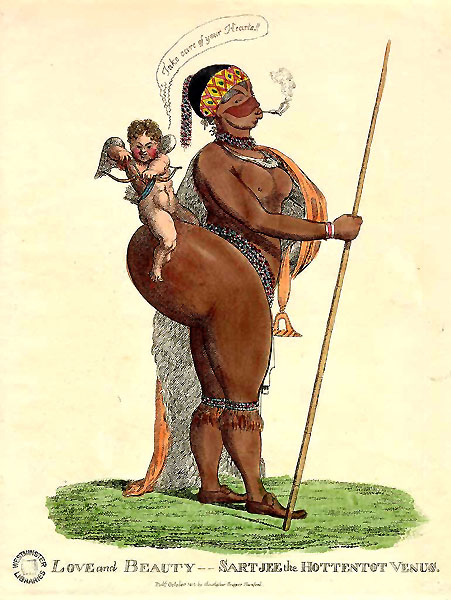
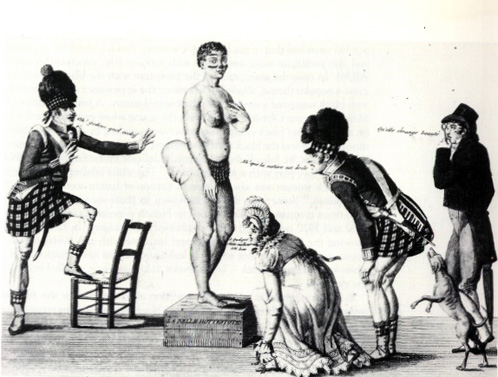
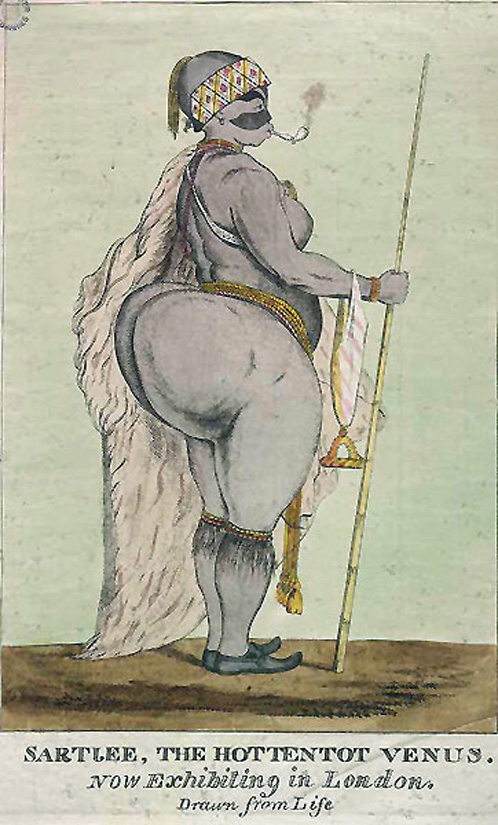
The tragedy of Sarah Baartman
The fascination of the "other" played itself out in many ways in the history of Southern Africa, but perhaps most poignantly in the story of Sarah Baartman, the Khoi woman who was tricked into going to Europe to be publicly exhibited as a "freak" due to her possessing steatopygia, the accumulation of fat in the buttocks, which was a typical feature of Khoi women.
Sarah Baartman was returned to South Africa and given a proper burial in 2002, after more than 100 years of shame.
The story of Sarah Baartman is one which typifies the racist and sexual obsession with the exotic, the strange. Her story is a tragic one, a story of lewdness and racism, of deprivation and abuse.
Baartman was born somewhere in valley of the Gamtoos River in the Eastern Cape province of South Africa in about 1788, and arrived in Cape Town some years later, where she became the slave of one Peter Cezar. At her owner's home she was noticed by Peter Cezar's brother Hendrik, who saw in her a commercial opportunity instead of a person. He formed a partnership with a ship's doctor called Alexander Dunlop, who persuaded Baartman that she would become rich and famous if she accompanied him to London.
So in 1810 she left with Dunlop to make her fortune, she supposed. Instead, she was put on display, standing on a platform and leered at by the curious of London, performing whatever her master commanded he to do. Apparently the people of London flocked to see the curiosity and she became the subject of ribald jokes and bawdy ballads.
Baartman was billed as the "Hottentot Venus." The show became the subject of a court case when abolitionist groups charged that it was tantamount to slavery. Eventually the show became less lucrative and Baartman was sold to a French animal trainer who put her on show in Paris.
While she was in Paris Baartman attracted the attention of Napoleon's surgeon, Georges Cuvier. He wanted to study her as a "scientific" specimen and enticed her with liquor to pose nude so he could study her steatopygia and her so-called "Hottentot apron", an elongated labia minora thought to be indicative of the base sexual instincts of the "lower races." She posed nude but steadfastly refused to allow public examination of the "apron."
Nonetheless she descended into a hell of alcoholism and prostitution which eventually led to her death in late December 1815. At her death Cuvier managed to get hold of her body to disect and write about in a supposedly "scientific" manner. He used the body and especially the sexual organs to develop racist theories about the depraved nature of the "lower races", theories which were in common currency for a century or more.
Cuvier pickled Baartman's sexual organs and brain in formaldehyde and these were put on display, along with her skeleton, in Paris' Musée de l'Homme. So that even in death she was the object of prying, inquisitive eyes. They were only removed from public view in 1974.
When Mandela became president of a newly-democratic South Africa in 1994 he made a formal request for the repatriation of Baartman's remains.
The French Senate eventually passed an Act to allow the repatriation of her remains in 2001 and she was returned home in 2002.
A poem written by a fellow Khoi descendant, Diana Ferrus in 1998 has been credited with raising the awareness that culminated in Baartman's return. The poem is called "I've come to take you home":
“I’ve come to take you home –
home, remember the
veld?
the lush green grass beneath the big oak trees
the air is
cool there and the sun does not burn.
I have made your bed at the
foot of the hill,
your blankets are covered in buchu and mint,
the
proteas stand in yellow and white
and the water in the stream
chuckle sing-songs
as it hobbles along over little stones.
I have come to wretch you away –
away from the poking eyes
of
the man-made monster
who lives in the dark
with his clutches of
imperialism
who dissects your body bit by bit
who likens your
soul to that of Satan
and declares himself the ultimate god!
I have come to soothe your heavy heart
I offer my bosom to your
weary soul
I will cover your face with the palms of my hands
I
will run my lips over lines in your neck
I will feast my eyes on
the beauty of you
and I will sing for you
for I have come to
bring you peace.
I have come to take you home
where the ancient
mountains shout your name.
I have made your bed at the foot of the
hill,
your blankets are covered in buchu and mint,
the proteas
stand in yellow and white –
I have come to take you home
where
I will sing for you
for you have brought me peace.”
The "buchu", Agathosma betulina and Agathosma crenulata, plant has been used medicinally for Centuries, possibly millennia, in the Cape, and is also used as a sign of respect.
Perhaps in death Sarah Baartman will receive the respect and find the peace that were denied her in life.




